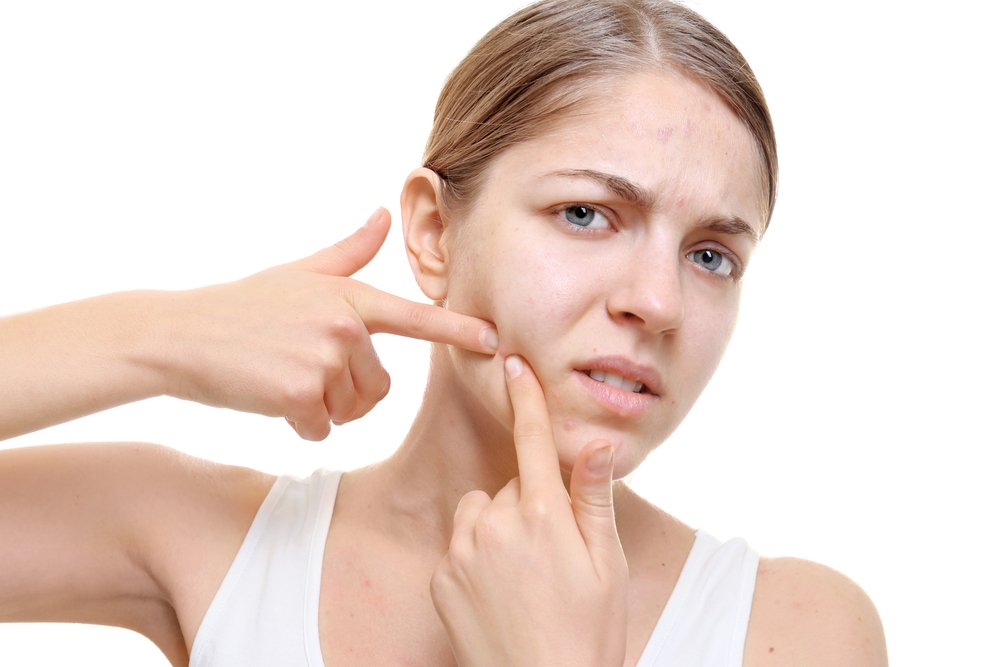 Acne is regarded as the most common skin disorder worldwide, yet its presentation varies dramatically from patient to patient.
Acne is regarded as the most common skin disorder worldwide, yet its presentation varies dramatically from patient to patient.
In order to treat such a wide variety of clinical appearances, it is important to first understand the pathways that create various acne phenotypes. There are four pathways to consider when determining how to treat acne: (1) Excessive sebum or oil production, (2) hyperkeratinization or occluded hair follicles, (3) infiltration of Cutibacterium acnes (C. acnes), and (4) a local inflammatory reaction.
Clinical Variants
In addition to considering the four pathways, it is also important to distinguish between non-inflammatory and inflammatory acne prior to determining the most appropriate treatment. Non-inflammatory acne includes the characteristic closed comedones, or “whiteheads,” and open comedones, or “blackheads.” Inflammatory acne presents as the nodulistic and cystic acne that are usually accompanied by erythema and lingering post-inflammatory changes that may take months to subside.
Mechanism of Action and Treatment
Once we understand the pathogenesis and clinical features of a particular case of acne, treatment can begin. The treatment categories available to the provider are as follows--topical retinoids, topical antimicrobials, oral antibiotics, oral contraceptives, antiandrogens, and oral isotretinoin. Topical retinoids work by increasing cell turnover thereby exposing current comedonal acne (the reason patients using topical retinoids experience a sudden increase in blemishes, commonly known as “purging,” during the first few days of treatment), and inhibiting production of new comedones. Topical antimicrobials, such as benzoyl peroxide or topical antibiotics, work as anti-bacterial and anti-inflammatory agents. Oral antibiotics have both antibacterial and anti-inflammatory effects as well, though they are more efficacious than topical antimicrobials. Oral contraceptives work by suppressing androgen production which is responsible for excess sebum production. Antiandrogens, such as Spironolactone, work similarly to oral contraceptives in reducing androgens and therefore oil production, which is responsible for clogging glands and hair follicles. With severe acne that is resistant to other therapies, oral isotretinoin is used as a treatment of last resort. Oral isotretinoin directly affects the sebaceous glands, shrinking the glands and hindering their ability to produce sebum. This systemic therapy works on all major pathways of acne, typically as the solely effective course of treatment for the most severe cases of acne should all conventional therapies fail. Isotretinoin, as well, has antibacterial and anti-inflammatory effects, and it suppresses C. acnes. It remains the most effective available treatment for acne with sustained remission.
| Mild | Moderate | Severe | |
| 1st Line Treatment | Benzoyl Peroxide (BP) or Topical Retinoid or Topical Combination Therapy** BP + Antibiotic or Retinoid + BP or Retinoid + BP + Antibiotic | Topical Combination Threrapy** BP + Antibiotic or Retinoid + BP or Retinoid + BP + Antibiotic or Oral Antibiiotic + Topical Retinoid + BP or Oral Antibiotic + Topical Retinoid + BP + Topical Antibiotic | Oral Antibiotic + Topical Combination Therapy** BP + Antibiotic or Retinoid + BP or Retinoid + BP + Antibiotic or Oral Isotretinoin |
| Alternative Treatment | Add Topical Retinoid or BP (if not on already) or Consider Alternate Retinoid or Consider Topical Dapsone | Consider Alternate Combination Therapy or Consider Change in Oral Antibiotic or Add Combined Oral Contraceptive or Oral Spironolatone (Females) Or Consider Oral Isotretinoin | Consider Change in Oral Antibiotic Or Add Contraceptive or Oral Spironolactone (Females) or Consider Oral Isotretinoin |
Table 1. Treatments of acne https://www.jaad.org/article/s0190-9622%2815%2902614-6/pdf
Other Consideration for the Provider
- Adapalene is the least irritating retinoid, with tazarotene being the most abrasive.
- Topical retinoids are unstable when exposed to sunlight and therefore best applied at night.
- Unlike other topical antimicrobials, benzoyl peroxide does not lead to antibiotic resistance.
- Benzoyl peroxide can be combined with topical antibiotics to increase the treatment’s likelihood
- of success.
- Topical antibiotics and oral antibiotics cannot be used together as this increases the risk of
- resistance to treatment.
- Erythromycin and Clindamycin have widespread bacterial resistance and therefore are not
- effective medications in treating acne.
- Topical retinoids increase the infiltration of other topicals by exfoliating the top layer of skin.
- First-line oral antibiotics for acne vulgaris are of the tetracycline class, examples being
- doxycycline and minocycline.
- Contraception must entail a combined hormonal therapy, rather than progestin alone, when targeting acne. There are three oral contraceptives currently approved by the FDA for treating
- acne: (1)ethinyl estradiol, norgestimate, (2) ethinyl estradiol, drospirenone), and (3)ethinyl
- estradiol, norethindrone.
- Isotretinoin is teratogenic and is known to cause severe birth defects 3
- Although diet alone may not be sufficient in treating acne, there is evidence suggesting a
- correlation between dairy, sugar, and carbohydrate intake and acne flares
Word of Caution for the Provider
Successful treatment of acne may be compromised by a number of factors, most typically improper useor the patient’s failure to adhere to the course of treatment. In my practice, I most often hear frompatients that failed to adhere to their prescribed treatment that they were too busy to continue theirtreatment or that they did not see sufficient improvement within the first few weeks and opted to ceasetreatment. It is therefore important to address the potential for the patient’s own actions to jeopardizetreatment at the outset,before the patient leaves the office. Patients should be advised, and reassured,that acne improves slowly,with noticeable improvement in their condition not occurring usually untilabout 6-8 weeks from the beginning of treatment. Topical retinoids, especially, are commonlymisused,and it should be reiterated to the patient that topical retinoids are “full-face” treatments, notspot treatments, and that only a “pea-sized” amount should be applied to the whole face as largerquantities can cause dryness and irritation, leading to patient fatigue with the treatment. Once acne hasbeen well-controlled, focus can now be placed on the treatment of residual scarring andpost-inflammatory hyperpigmentation.

